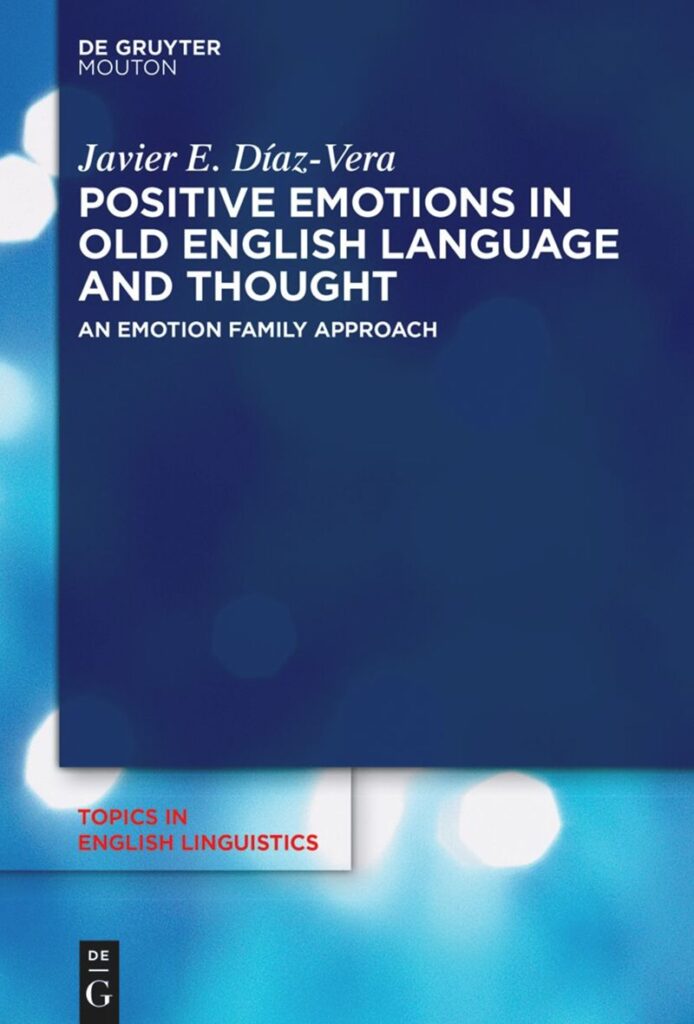Rationale

Cluster IP
This cluster builds on over a decade of research on the verbal and nonverbal expression of emotions in ancient and medieval languages of Western Europe. It seeks to offer a comprehensive understanding of how emotions were construed, communicated, and experienced in the past. Our emphasis on positive emotions is not coincidental: the most valuable lessons from the history of emotions lie in understanding how positive feelings like joy, love, or compassion, were cultivated by our ancestors, and how they embraced these moments of well-being, as precious as they were rare, to enrich their lives in meaningful ways. We are convinced that it is precisely thanks to their struggles to cultivate and savour such moments that we can better enjoy the simple pleasures of life (which we, maybe too often, take for granted).

The Lady and the Unicorn: À mon seul désir, attributed to an unknown Flemish or French workshop around 1500 (Wikimedia Commons).
Leading research questions
The research in this cluster explores the origins and evolution of positive emotion vocabulary in modern European languages. It examines the role of figurativeness and embodiment in shaping these expressions and investigates to what extent these patterns reflect broader aspects of our past.
How did the vocabulary for positive emotions used in modern European languages emerge and evolve, and which emotion concepts were considered most relevant for effective communication?
What role did figurativeness (metaphor and metonymy) and embodiment play in shaping these expressions?
Do these conceptual preferences reflect concrete aspects of ancient and medieval psychologies and societies?
Simply by experiencing positive emotions, our ancestors would have naturally accrued more personal resources. And when later faced with threats to life or limb, these greater resources translated into greater odds of survival and greater odds of living long enough to reproduce.
(Barbara Frederickson, 2003, “The value of positive emotions: The emerging science of positive psychology is coming to understand why it’s good to feel good.” American Scientist 91.4, p. 334)
Showcase study (1): Approaching medieval empathies

junior researcher
Old English authors evoke empathy in their texts through semantic extensions, particularly resultative metonymies, which expanded the meanings of certain emotion words into the domain of empathy. The findings confirm the hypothesis that Old English authors conveyed empathy despite lacking specific terminology for it, highlighting the role of figurative language in expressing emotions. The analysis also supports the idea that empathy could be a universal human emotion, aligning with cross-cultural evidence.
The data reveals a shift in the portrayal of empathy before and after the Christianisation. In pre-Christian England, empathy was framed as a kinship-bound obligation, whereas Christianisation transformed it into a spontaneous emotional response to others’ suffering, necessitating new terminologies. This shift underscores the evolving cultural and emotional frameworks in medieval texts.
Showcase study (2): Unveiling the sensitive Viking

senior researcher
The ancient Scandinavians were much more emotionally perceptive than they are often given credit for, especially when it came to touch. In magical-medical settings, women were depicted using their hands to heal or foresee the future, much like Christian traditions of miraculous touch. As this shows, touch was not just a physical act—it carried deep emotional and even spiritual significance.
While Old Norse did not have an extensive vocabulary linking touch to feelings, it still conveyed emotions like joy and piety, though fear, sorrow, and repentance were more common. As Christian influence grew, the meaning of touch-related words expanded, making them key to expressing emotions. Even in the famous sagas, where survival and power struggles took centre stage, touch still played a role in conveying both connection and oppression. All in all, the Norse people might not have spoken much about emotions in a modern sense, but their culture and language reveal that they deeply felt them.
Major research results
Book chapter
Manrique-Antón, Teodoro (2025). Hendr hafa þau ok þreifa ekki: Tactile sensitivity and emotional interaction in Old Norse literature. In Edel Porter and Javier E. Díaz-Vera (eds) Cultural Models for Emotions in the North Atlantic, 700-1400 (Medieval Texts and Cultures of Northern Europe; TCNE, 38). Brepols.
ISSN: 2687-0088
RELEVANCE: This study examines how touch and emotions were understood in Old Norse culture. Touch, influenced by cultural and social factors, could evoke both positive and negative emotions. The research explores Old Norse vocabulary related to touch, its evolution, and its connection to emotional experiences. By comparing translated and vernacular texts, it seeks to determine whether Icelandic perceptions of touch differed from European traditions, offering insight into how emotions were conceptualized in Medieval Scandinavian literature.
KEY AREAS: Old Norse, Conceptual Metaphor, Cultural Linguistics, Touch, Emotions.




Monograph
Díaz-Vera, Javier E. (2025). Positive Emotions in Old English Language and Thought: An Emotion Family Approach (Topics in English Linguistics; TiEL 118), De Gruyter Mouton, 2025.
ISBN: 9783111641881
RELEVANCE: I have always been intrigued by how emotional expressions evolve over time, yet their dynamic and historical aspects are often overlooked. In this book, I focus on Old English positive emotions like happiness, love, and pride, combining cognitive linguistics and historical sociolinguistics to explore how these emotions were expressed and how their meanings shifted. By analyzing historical lexical data, I uncover how positive emotions reflected societal changes and cultural influences, shaping the figurative language of the time. This work highlights the deep connection between language, emotions, and the evolving human experience.
KEY AREAS: Cognitive Linguistics, English, Germanic Languages, Historical Linguistics, Linguistics and Semiotics, Sociolinguistics, Theoretical Frameworks and Disciplines.


Journal article
Díaz-Vera, Javier E. (2024). Old English EMOTION IS TEMPERATURE: Cultural influences on a universal experience. Russian Journal of Linguistics 28(1): 33–54.
ISSN: 2687-0088
RELEVANCE: In this study I explore how temperature metaphors shape our understanding of emotions, focusing on Old English texts (850–1100). While high body temperature is typically linked to negative emotions like anger, my analysis reveals its use in describing positive emotions as well. This challenges the idea that temperature metaphors are purely universal and highlights their cultural variability, contributing to the broader debate on metaphor and embodiment.
KEY AREAS: Old English, TEMPERATURE metaphor, Universality vs. Cultural Specificity; History of Emotions, Conceptual Metaphor and Metonymy.



Journal article
Díaz-Vera, Javier E. (2022). Soft hearts and hard souls: The multiple textures of Old English feelings and emotions. Cognitive Linguistic Studies 9(1): 128–151.
ISSN: 2213-8722
RELEVANCE: In this paper, I examine the shift from concrete to abstract meanings in Old English adjectives describing physical textures (e.g., roughness, smoothness). Using Old English dictionaries, I explore how these adjectives evolved to express physical, sensory, and emotional sensations. I categorize the secondary meanings into physical (e.g., weakness), sensory (e.g., sounds, sights), and emotional (e.g., grief, anger). I analyze these changes through metonymic, synesthetic, and metaphorical extensions. My study supports the idea that abstract concepts are rooted in physical experience and concludes by discussing the cultural influence of the Christianization of Anglo-Saxon England on these semantic shifts.
KEY AREAS: Old English, Emotion Metaphor, Cultural Linguistics, Sensorial Perception, Touch.
Book chapter
Díaz-Vera, Javier E. (2020). The sense of touch: The haptic communication of emotions in Anglo-Saxon England from a linguistic perspective. In Clegg Hyer, Maren, and Gale R. Owen-Crocker (eds.). Sense and Feeling in Daily Living in the Early Medieval English World. Liverpool University Press, 88–106.
ISBN: 978-1789621440
RELEVANCE: This chapter reveals that the domain of tactile perception was a frequent source domain for Old English emotion metaphors, shedding light on their conceptualization of touch. It raises key questions about the role of touch in Anglo-Saxon communication and how tactile their culture was overall. Exploring their position on the high/low contact spectrum and its impact on everyday interactions requires interdisciplinary collaboration, offering new insights into the history of the senses and emotional expression in the past.
KEY AREAS: Old English, History of Emotions, Physical Perception, Touch.



Book chapter
Díaz-Vera, Javier E. (2019). The changing pursuit of happiness. In Broomhall, S. and A. Lynch (eds.). The Routledge History of Emotions in Europe: 1100-1700. Routledge, 371–387.
ISBN: 978-1315190778
RELEVANCE: This chapter explores the evolving cultural meanings of happiness in Western Europe between 1100 and 1700, offering a fresh perspective through the lens of Cognitive Linguistics. This work examines how metaphor and metonymy shaped the semantic evolution of happiness in historical varieties of English. By reconstructing these semantic changes, it uncovers shifts in cultural models of happiness, tracing the transition from medieval views of happiness as unattainable to its redefinition as a vital pursuit. This analysis contributes to our understanding of how language reflects and drives cultural transformations.
KEY AREAS: History of Emotions, Multimodal Metaphor, Situated Emotions, Cultural Artifacts, Canterbury Cathedral.



Journal article
Díaz-Vera, Javier E. (2013). Woven emotions: Visual representations of emotions in medieval English textiles. Review of Cognitive Linguistics 11(2): 269–284.
ISSN: 1877-9751
RELEVANCE: This research underscores the shared conceptual frameworks underlying verbal and visual representations of emotions in Old English culture. By analyzing the Bayeux Tapestry, it reveals how Anglo-Norman artists systematically employed visual stimuli to convey emotions, highlighting differences in embodied and non-embodied representations across modalities. The study bridges linguistic and visual narratives, providing valuable insights into medieval emotion representation and communication.
KEY AREAS: Old English, Visual Metaphor, Textiles, Bayeux Tapestry, History of Emotions, Pictorial Runes.



Funding received
Cultural Models of Positive Emotions in Medieval Germanic Languages (PID2022-138508NB-I00), funded by MICIU/FEDER-EU
This project (2023-2026) explores how positive emotions—such as joy, love, and pride—were expressed and conceptualized in the medieval Germanic languages. By analyzing texts from Old English, Old High German, Old Norse, and other Germanic languages, the study investigates the cultural models that shaped emotional expressions during this period. The research focuses on identifying recurring themes and metaphors used to describe positive emotions, examining how these emotions were linked to social values, religious beliefs, and communal identity. It also looks at the role of language in shaping and reinforcing cultural norms related to emotions, and how medieval societies used language to articulate experiences of happiness, affection, and moral virtues. Through this analysis, the project sheds light on the ways in which language and culture intersect in the expression of positive emotions, offering insights into the emotional landscapes of medieval Germanic-speaking communities.
The Verbal Expression of Basic Emotions: Diachronic and Sociolinguistic Variation (PPII-2014-015-A), funded by FEDER-EU/JCCM
In this project (2014-2017) we explored how basic emotions like joy, anger, and sadness are expressed in English, both historically and in contemporary varieties. By analyzing historical texts and modern speech patterns, the research revealed significant changes in emotional vocabulary over time, shaped by cultural and technological shifts. For example, traditional religious metaphors for emotions have gradually given way to more physiological and action-based language. Sociolinguistic patterns also emerged, showing how gender, age, and region influence emotional expression. This work not only deepened our understanding of emotional language but also provided valuable ideas for future research, reinforcing the connection between language, emotion, and culture.